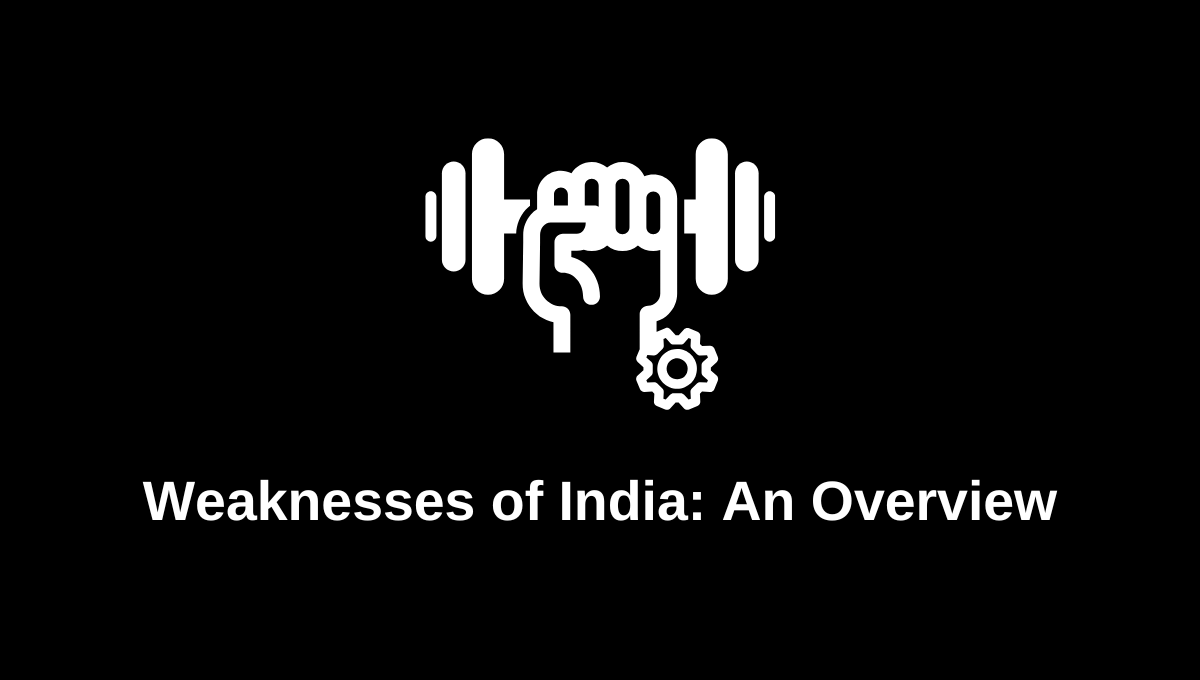India is a country with immense potential and strengths, but it also faces several challenges that hinder its growth and development. Understanding these weaknesses is crucial for addressing them effectively. Here’s an overview of some of the key weaknesses India faces:
1. Poverty and Inequality
Despite significant economic growth, a substantial portion of India’s population lives in poverty. Income inequality is pronounced, with wealth concentrated in urban areas while rural populations often struggle to meet basic needs. This disparity can lead to social unrest and hinder overall development.
2. Infrastructure Deficiencies
India’s infrastructure—such as roads, railways, and power supply—often lags behind its requirements. Poor infrastructure can slow down economic growth, affect transportation efficiency, and limit access to essential services, particularly in rural areas.
3. Corruption
Corruption remains a significant issue in India, affecting various sectors, including politics, business, and public services. It undermines governance, discourages foreign investment, and hampers the efficient delivery of services to citizens.
4. Education and Skill Gap
While India has made strides in education, there are still challenges regarding quality and access. Many students do not receive a quality education, leading to a skills gap in the workforce. This affects employability, particularly in emerging industries.
5. Healthcare System Limitations
India’s healthcare system faces numerous challenges, including underfunding, inadequate infrastructure, and a shortage of healthcare professionals. Access to quality healthcare remains uneven, particularly in rural areas, leading to disparities in health outcomes.
6. Environmental Issues
India faces significant environmental challenges, including air and water pollution, deforestation, and climate change impacts. Rapid industrialization and urbanization have led to severe environmental degradation, affecting public health and biodiversity.
7. Political Instability and Bureaucracy
Frequent political changes and a complex bureaucratic system can lead to inefficiencies in governance. This instability may hinder long-term policy implementation and deter investment.
8. Social Tensions
India’s diverse population includes various religions, castes, and ethnic groups. While this diversity is a strength, it can also lead to social tensions and conflicts. Issues such as caste discrimination and communal violence pose challenges to national unity.
9. Rural-Urban Divide
The disparity between rural and urban areas is pronounced, with urban regions often experiencing better access to services, employment, and infrastructure. This divide can exacerbate issues like migration, leading to overcrowded cities and underdeveloped rural areas.
10. Dependence on Agriculture
A significant portion of India’s population relies on agriculture for their livelihood, making the economy vulnerable to fluctuations in weather and global market prices. Agricultural productivity often remains low due to outdated practices and insufficient investment.
Conclusion
While India possesses immense potential for growth and development, addressing these weaknesses is crucial for achieving sustainable progress. By focusing on poverty alleviation, infrastructure development, education, healthcare, and environmental sustainability, India can work towards overcoming these challenges and realizing its full potential as a global leader.
